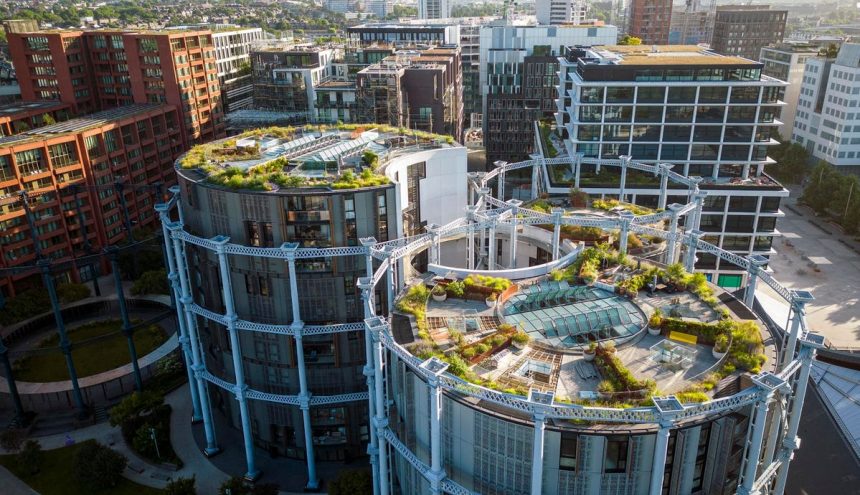Mahesh Ramanujam is the cofounder, President and CEO of Global Network for Zero.
The World Meteorological Association forecasts a grim reality; it anticipates a 66% likelihood that, in at least one of the next five years, the annual average near-surface global temperature will exceed 1.5°C above pre-industrial levels. If that’s true, then not only have the commitments outlined in the Paris Agreement gone by the wayside, but it strengthens the case for rapidly accelerating building decarbonization.
With nearly 40% of the world’s annual emissions, this is the sector most in need of total transformation. So then why did energy-related emissions of the buildings and construction sector reach an all-time high in 2021? Why has the growth in floor space outpaced substantial building energy efficiency investments?
In the past, I’ve chalked up to market failure the commercial real estate (CRE) sector’s underperformance on commitments to climate goals and material contributions to climate action. While the ROI of adapting real assets to physical climate risks may be straightforward, this rent-seeking industry historically has had little incentive to invest toward the mitigation of their contributions to climate change—especially in existing buildings
There are, however, exceptions to this trend. There are a number of clear-eyed CRE organizations, backed by similarly motivated investors, that have taken up the climate action mantle in recent years—both independently and, more promisingly, collectively. But the size and scale of the task at hand entails making these examples anything but exceptional; earlier this month, the governments convened by the IEA were in consensus over the need to double annual energy efficiency improvements.
Underperformance, even if marginal in impact, is no longer an option. Buildings are the foundation of our lives and, increasingly, are sanctuaries against the effects of climate change. And with 80% of today’s building stock expected to be operational by 2050, we must ensure these assets guarantee sustainable, healthy and resilient environments for the foreseeable future. My recent travel in India, the U.K., U.S. Midwest and elsewhere only further underscored the need to empower CRE developers, owners and investors to adapt their thinking and prioritize the complete decarbonization of the world’s existing building stock.
Success hinges on addressing CRE business leaders’ apprehensions over the perceived costs of climate change mitigation. Fortunately, there are multiple opportunities to finance net zero-enabling projects.
Public Funding Opportunities
On financing building decarbonization, federal, state and local government-sponsored (and administered) funding opportunities make for a convenient and reliable starting point. Take the recently enacted U.S. Inflation Reduction Act, which mobilizes billions of dollars in tax credits, grants and rebates to help building owners offset the costs of energy efficiency improvements and other emissions-reducing measures in commercial and residential buildings. Chief among these is the 179D commercial buildings energy-efficiency tax deduction which, as U.S.-based champions of building decarbonization are keen to celebrate, was not only made permanent by the Energy Act of 2020, but was expanded by the IRA.
Remaining critics of the new and improved 179D point out that the credit nevertheless stops short of incentivizing emissions reductions beyond 50%. Fortunately, the wealth of incentives applicable to emissions reduction projects in existing buildings include tax credits for onsite clean electricity generation and storage, electric vehicle charging infrastructure and even carbon capture—each of which may help to plug gaps in the capital stack for net zero.
Even still, there are bound to be CRE leaders who determine that these government funds are insufficient to meet their needs, be it because of their amounts, their time-constrained availabilities or the restrictiveness of the criteria that must be met to qualify for them. In these cases, CRE developers, owners and investors must leverage opportunities with commercial service providers and the capital markets.
Commercial Solutions and Capital Markets
Start with energy service companies, which typically execute building energy-efficiency retrofits and other emissions-reducing projects via energy savings performance contracts (ESPCs). A popular model with government agencies in the U.S. and abroad, an ESPC offers a low-risk financial supplement to IRA monies, particularly for projects that entail delivery of technically advanced systems, such as microgrids, combined heat-and-power (CHP) or construction-intensive building renovations.
Of course this project implementation model is not without its challenges. As the name suggests, ESPCs typically return a project’s resultant energy savings to the service provider over a predetermined period, leaving the accounting and financial planning and analysis (FP&A) challenges of financing still more net zero-enabling projects to the project host.
If anything, this reaffirms the importance of the capital markets. By issuing sustainability-linked corporate bonds—for which demand is booming—or arranging for sustainability performance-based loans, CRE business leaders can secure funding for a broader range of projects and initiatives. Moreover, successfully executing debt-financed sustainability projects is part and parcel of the ESG performance data collection, analysis and disclosure workflows, which businesses can leverage to plus-up their bond ratings, equity valuations and other means of leverage in capital raise campaigns.
Looking ahead, once a CRE leader achieves net zero operations at a given building facility, they will need to proceed toward eliminating their asset’s “embedded emissions” and, eventually, progressing into carbon negative operations.
For both of these pursuits, the voluntary carbon markets are a welcome solution. On embedded emissions, which may be responsible for as much as half of the built environment’s cumulative carbon impact, purchasing voluntary carbon credits issued by high-integrity offset projects can help CRE businesses address the historical emissions that would otherwise take years to remediate via net zero operations alone. And for CRE business leaders seeking to maximize the ROI of their own decarbonization efforts, and with it, enable others to decarbonize their own operations, they ought to pursue built environment-based carbon offset projects and crediting schemes, which I’ve written about in the past.
To be sure, the optimal building decarbonization capital stack will vary across market sectors, market segments and individual organizations. Regardless of its composition, though, what matters is that CRE business leaders both remember the impetus for their action, as well as the opportunities at hand.
Forbes Business Council is the foremost growth and networking organization for business owners and leaders. Do I qualify?
Read the full article here










